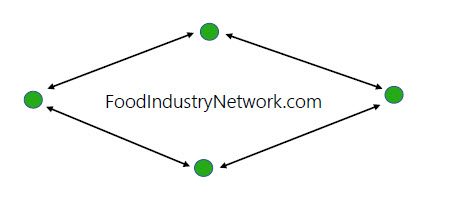India forecasts above average monsoon rains in boost to crop output, economy

New Delhi | Reuters — India is likely to see above-average monsoon rains for the second straight year in 2025, the government said on Tuesday, raising expectations of higher farm and economic growth in Asia’s third-biggest economy.
The monsoon delivers nearly 70 per cent of the rain needed to water crops and recharge reservoirs and aquifers. With nearly half of the country’s farmland without any irrigation, it depends on the June-September rains to grow a number of crops.
Why it matters: India is a major destination for Canadian crop exports
Read Also

China, Vietnam support multilateral trade regime amid U.S. tariff pressure
China and Vietnam expressed their support for maintaining a multilateral trade regime centered around the World Trade Organization in a joint statement issued on Tuesday at the end of a two-day visit by Chinese President Xi Jinping.
Good rains will help to bring down food prices, to keep inflation at the central bank’s comfort level, and to allow the world’s biggest rice exporter to ship more of the staple.
The monsoon, which usually arrives over the southern tip of Kerala state around June 1 and retreats in mid-September, is expected to reach 105 per cent of the long-term average this year, M. Ravichandran, secretary in the Ministry of Earth Sciences, told a news conference.
The India Meteorological Department defines average or normal rainfall as ranging between 96 per cent and 104 per cent of a 50-year average of 87 cm (35 inches) for the four-month season.
Above-average rainfall is very likely over most parts of the country, except for some areas over northwest India, northeast India, and southern Peninsular India, where below-average rainfall is likely, Ravichandran said.
The El Niño weather phenomenon, which usually leads to below normal monsoon rains, is unlikely to occur during the four-month-long monsoon season, said Ravichandran.
In 2024, India received 107.6 per cent of its long period average rainfall, against a forecast of 106 per cent.
Steady agricultural growth will boost rural consumption and keep inflation near the Reserve Bank of India’s estimate, enabling flexibility in rate cuts amid global volatility, said Aditi Gupta, economist at Bank of Baroda.
The RBI lowered its key repo rate last week for a second consecutive time and changed its monetary policy stance, signalling room for more cuts ahead as it seeks to boost the sluggish economy in the face of fresh U.S. tariffs.
India is the world’s biggest exporter of rice and onions, and the second-biggest producer of sugar. Following surplus rainfall in 2024, India lifted curbs on rice and onion exports but allowed limited sugar exports of 1 million tons.
“Above-average rains for the second year will help New Delhi increase sugar, rice and onion exports. It will also help reduce edible oil imports,” said a Mumbai-based dealer with a global trade house.
The world’s largest importer of edible oils, India currently fulfils nearly two-thirds of its demand through overseas purchases of palm oil, soyoil and sunflower oil, primarily from Indonesia, Malaysia, Argentina, Brazil, Russia, and Ukraine.
— Additional reporting by Siddhi Nayak
Source: Farmtario.com


